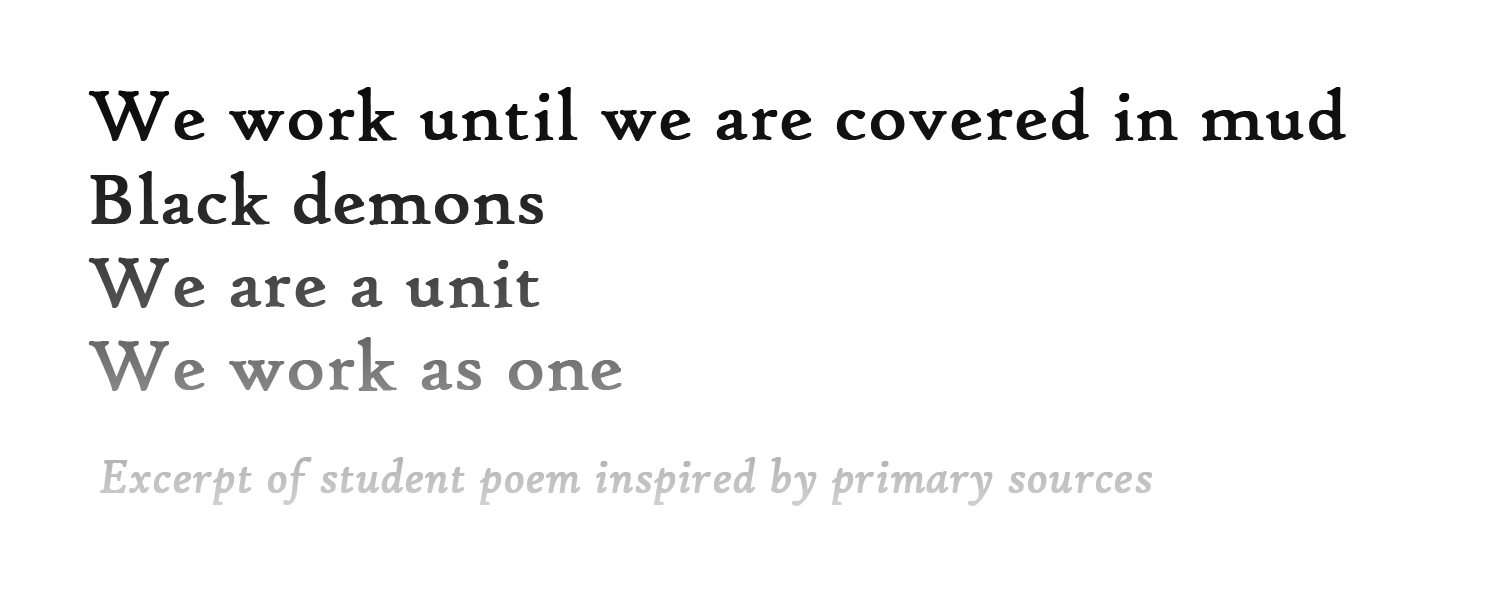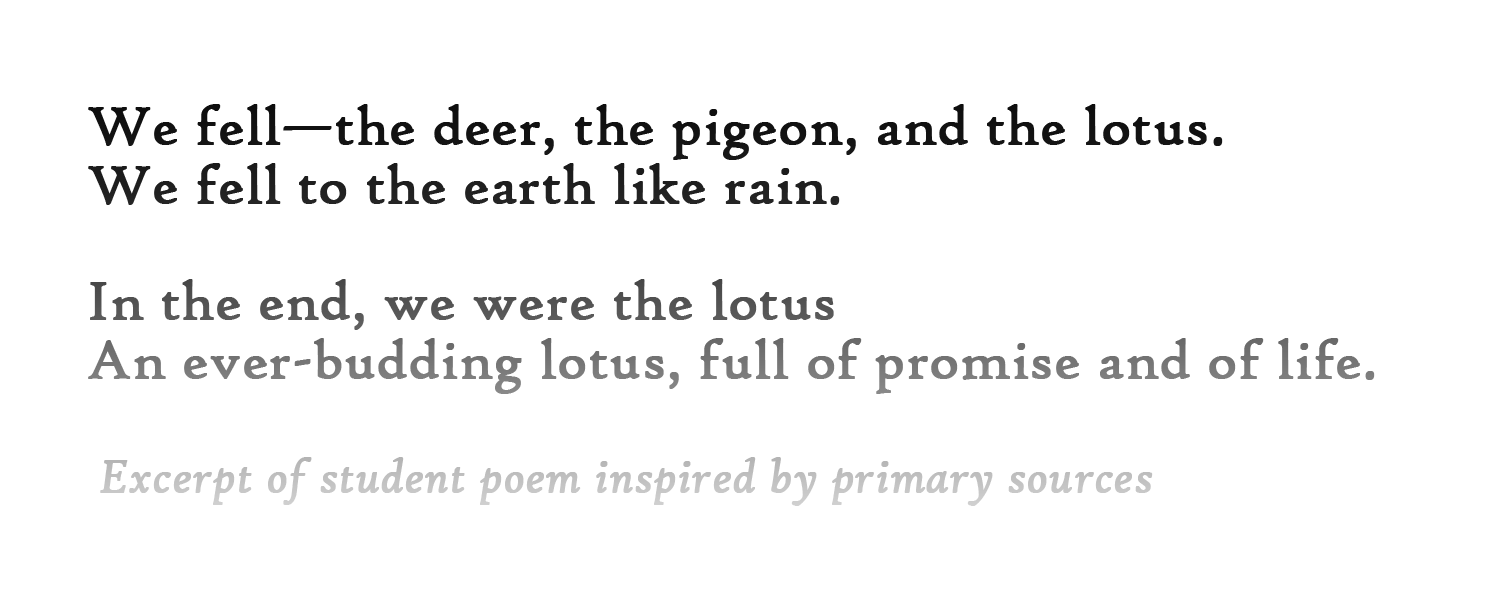Drawing on Student Creativity to Enhance Cultural Understanding
by Sylvia Cavanaugh
Culture encompasses everything about the way of life of a group of people, from food, to art, to technology and economic systems. Culture is dynamic, always shifting and making itself anew across space and time. My job is to teach African and Asian culture, geography, and history to ninth grade students.
The study of culture often becomes more dynamic when it is viewed through the lens of disruption. For instance, my classes study the ways in which the AIDS pandemic disrupted the cultures of East Africa, forcing them to find new ways to reclaim older traditions of communal support. Likewise, my students study the cultures of Southeast Asia through the lens of the Vietnam War. I teach the “American War” using primary sources, especially those that reflect voices of people living in Vietnam, Laos, and Cambodia at the time of the War.
Geography is practically its own character when it comes to the American War, and perhaps most important was the Ho Chi Minh Trail, the network of supply lines running from North to South Vietnam. The Hmong were drawn into the war when their leaders decided to back the U.S. in its attempt to disable the Trail.
Ho Chi Minh Trail Student Mural
Benjamin Bloom, an educational psychologist in the 1950’s, developed a theory on the mastery of learning that involves a series of assessments of ever-increasing complexity. Today, educators still use Bloom’s Taxonomy, with creativity poised at the top of the ladder. The teaching of culture works exceptionally well in helping students to express their understanding through creative expression.
Students learn at the deepest levels when historical content in linked to emotion and creativity. The voices of men and women, boys and girls, who lived, worked, and fought on the trail bring the tale to life. There was also a long process of reconciliation after the war, and voices here tend to be most poignant and heartfelt, with perpetrators and victims alike coming to grips with the past. Students in my classes read first-hand Vietnamese accounts of life on the trail, as well as Hmong and Cambodian experiences. They use these primary sources to write poems capturing the story of the Trail and the War. Students are then divided into groups where they choose one poem to turn into a dance. Musicians in the class are pulled aside to learn Cambodian folk music. A couple of students paint murals of the Trail as background for the dances.
On the final day of the project, student musicians play Cambodian folk music as the poet reads the poem and each group performs a dance commemorating the War, life on the trail, and eventual reconciliation. The groups are chosen randomly, so students of all backgrounds work together for a common creative purpose that feels important, even reverent. Culture is specific, if fluid. The human experience is universal. Students who express cultural understanding through the lens of creative expression better understand the world and themselves.
Sylvia Cavanaugh has an M.S. in Urban Planning, teaches a high school course in African and Asian Culture and is the school’s Poetry Club advisor. A Pushcart Prize nominee, she has published three chapbooks and her poems have appeared in various periodicals and anthologies. She is a Contributing Editor for Verse-Virtual: An Online Community Journal of Poetry and is English language editor for Poetry Hall: A Chinese and English Bilingual Journal. She serves on the board of the Council for Wisconsin Writers and her work has received awards from The Wisconsin Fellowship of Poets, Wisconsin People and Ideas, The Poetry Society of Michigan, Milwaukee Irish Fest, the Hal Prize, and others.






